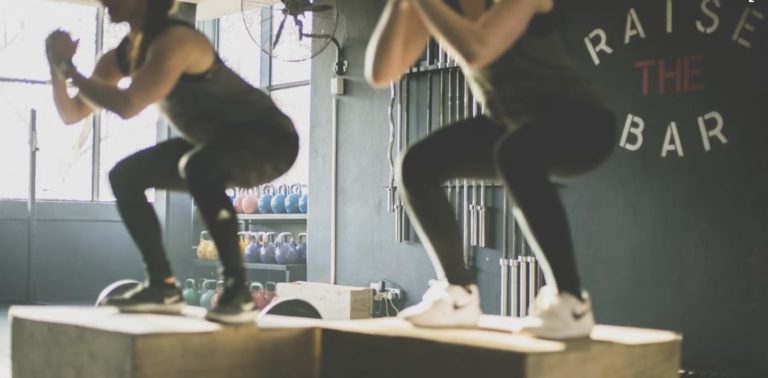How to Hit the Heavy Bag: Tips and Techniques for Effective Workouts
If you want to improve your punching skills and learn how to throw powerful punches like a pro, hitting the heavy bag is an essential part of your training. The heavy bag is a great tool to help you control and balance your punches, and it is a must-have for anyone looking to improve their boxing skills.
In this article, we will show you how to hit the heavy bag properly, including tips on throwing balanced punches, focusing on good breathing, and getting physical with the bag. We will also cover how to focus on defense and where you can go from here to continue improving your boxing skills. So, keep reading to learn how to hit the heavy bag like a pro!
Key Takeaways
- Hitting the heavy bag is essential for improving your punching skills in boxing.
- To hit the heavy bag properly, you need to throw balanced punches, focus on good breathing, and get physical with the bag.
- Focusing on defense and continuing to train on the heavy bag will help you improve your boxing skills.
How To Hit The Heavy Bag
When hitting the heavy bag, there are several things to keep in mind to ensure that you are getting the most out of your workout. Here are some tips to help you hit the heavy bag properly:
Throw Balanced Punches
One of the most important things to remember when hitting the heavy bag is to throw balanced punches with good technique. It is essential to maintain proper balance and form when throwing punches to avoid injuring yourself and to maximize the effectiveness of your workout.
When throwing a jab, it is important to snap it and not overextend. Double or triple jabs can be thrown while changing their power and rhythm. When throwing a cross, it is important to sit on the punch and use the rotation of your hips for power, not your arm. When throwing a hook, use the rotation of your hips for power, making sure not to wind up and overextend. Focus on the flow of your punches, rather than power.
Focus On Good Breathing
Good breathing is essential when hitting the heavy bag. Beginners often think that they will get more power by clenching their body and holding their breath, but this is not the case. Instead, breathe out with every punch. This will make your punches sharper and force you to breathe in. By breathing in your rhythm, you’ll increase your endurance and feel more relaxed.
Don’t Push The Bag
Many beginners think that they need to hit the heavy bag so it swings wildly back and forth, but this is not the correct way to use the heavy bag. Instead, punch the bag, don’t push it. Hit the bag as it swings back towards you.
Get Physical With The Bag
Think of the heavy bag as a real opponent. While you throw jabs and crosses from a distance, sometimes you have to fight close distance. Put your arms in a high guard, push back the heavy bag, and try these:
- Release and with each step back, throw an uppercut to the body.
- Release and throw a check hook to either side as you step out of the way.
- Shift the heavy bag from shoulder to shoulder as you roll under its weight.
All of these punches should be balanced. Take control of the heavy bag at all times.
Focus On Defense
Even though the heavy bag doesn’t hit back, it is still important to practice good habits and focus on defense. After a few hard rounds on the heavy bag, you may want to get lazy and drop your hands. Make sure your hands come back to your head with each jab and cross. When you throw a hook, keep it tight and throw it from your guard. Work on your defensive footwork too. As the bag swings towards you, practice stepping back to control the range or stepping to the side to change the angle.
In conclusion, hitting the heavy bag can be an excellent full-body workout that improves your punching power, speed, accuracy, and coordination, as well as your muscle strength, endurance, and overall level of fitness. By following the tips outlined above, you can get the most out of your heavy bag training program and achieve your fitness goals. Remember to warm-up before and cool down after your workout, and always use proper equipment, such as hand wraps and boxing gloves, to avoid injury.
Where to Go From Here?
Now that you have mastered the basics of hitting the heavy bag, it is time to take your training to the next level. Mixing up your punches and angles will keep your workouts exciting and help you develop new skills. Additionally, incorporating other types of bags into your training routine can help you improve your accuracy, timing, and rhythm.
For example, the double-end bag is great for increasing accuracy and reflexes, while the speed bag is perfect for improving timing and rhythm. The aqua bag is an excellent tool for working on uppercuts and rolls.
Watching videos of professional boxers like Floyd Mayweather can also provide inspiration and guidance on how to work the heavy bag effectively. Mayweather’s fluid movements and control on the bag are a testament to the importance of good technique and control.
If you’re looking to invest in boxing equipment, there are many options available. The best boxing jump ropes, gloves, hand wraps, head gear, shoes, and groin protectors can all enhance your training experience and keep you safe.
Frequently Asked Questions
Proper Techniques for Beginners when Hitting a Heavy Bag
When hitting a heavy bag, beginners should focus on proper technique to avoid injury and maximize the benefits of the workout. The first step is to wear gloves to protect the hands and wrists. The boxer should stand with their feet shoulder-width apart and their dominant foot slightly behind the other. The boxer should keep their hands up and their elbows in while punching the bag with a straight arm. The boxer should also pivot their feet and hips with each punch to generate more power.
Hitting a Heavy Bag without Gloves
It is not recommended to hit a heavy bag without gloves as it can cause serious injury to the hands and wrists. However, if one chooses to do so, they should wrap their hands with cloth or hand wraps to provide some protection. It is important to note that hitting a heavy bag without gloves can lead to cuts, bruises, and fractures.
Recommended Frequency for Training with a Heavy Bag
The recommended frequency for training with a heavy bag depends on the individual’s fitness level and goals. Beginners should start with 2-3 sessions per week, while more experienced boxers can train up to 5 times a week. It is important to allow the body time to rest and recover between sessions to avoid injury and burnout.
Preventing Wrist Injuries while Punching a Heavy Bag
Wrist injuries are common among boxers who hit the heavy bag frequently. To prevent wrist injuries, it is important to wrap the hands properly before hitting the bag. Boxers should also avoid punching the bag with a bent wrist and instead keep the wrist straight and aligned with the forearm. It is also important to gradually increase the intensity and duration of the workout to avoid overuse injuries.
Differences between Hitting a Heavy Bag and a Speed Bag
Hitting a heavy bag and a speed bag are two different workouts that target different areas of the body and require different techniques. Hitting a heavy bag is a full-body workout that targets the upper body, core, and lower body. It requires a lot of power and technique to punch the bag correctly. On the other hand, hitting a speed bag is a cardio workout that focuses on hand-eye coordination and rhythm. It requires speed and agility to keep the bag moving.
Simulating a Professional Boxer’s Heavy Bag Workout
To simulate a professional boxer’s heavy bag workout, one should focus on proper technique, footwork, and combinations. Boxers should also vary the intensity and duration of the workout to build endurance and power. It is important to incorporate rest periods and recovery time to avoid injury and burnout. Boxers can also use resistance bands or weights to increase the intensity of the workout.




